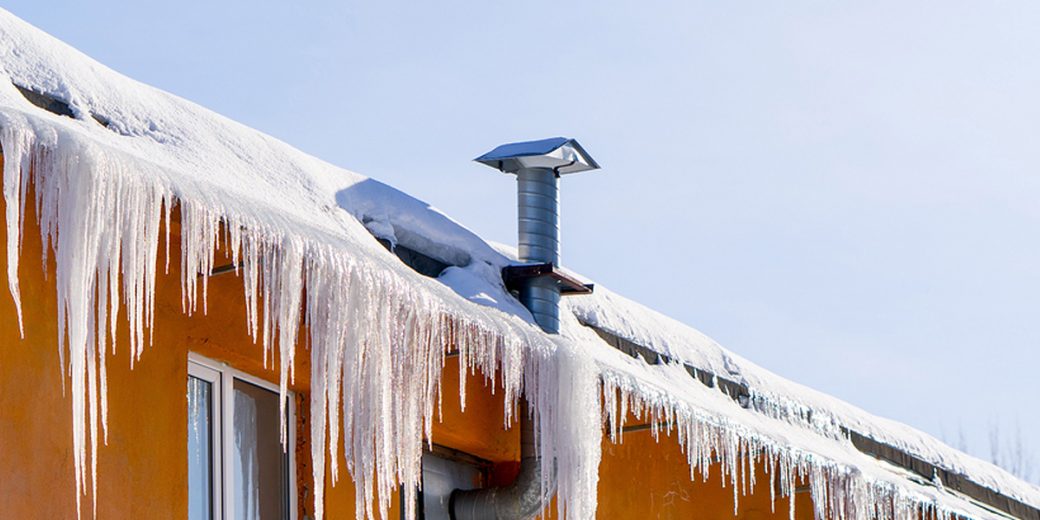Ice Dams 101: How to Identify, Prevent and Remove Ice Dams

Although snow can be beautiful and serve as the backdrop to some of the most whimsical environments, it can also be destructive and dangerous — especially when snow turns into ice dams.
Ice damming explains when melted snow refreezes to create a dam and potentially dangerous situations. Continue reading to learn more about ice dams, how to recognize them, and what you can do to protect your home.
How Do Ice Dams Form?

Since warm air rises, the top of your roof — (aka the “peak” or the “ridge”) — is probably the largest source of heat loss in your home. The warm air in your attic can heat the underside of your roof to impact the exterior, which causes the snow at the top of the roof to melt. Fluctuating temperatures and the sun facing position of your home can also be the determining factor in causing snow to melt.
Once the snow melts, the water makes its way downward to your gutters and comes in contact with the deck over the eaves (aka the lowest edge of the roof), which isn’t exposed to the attic’s heat. And this is usually where the ice dams begin to form.
As this water refreezes and forms, it effectively blocks any additional subsequent runoff — to create an ice dam. Because the dam grows as more water trickles from the top of your roof, the pooled water will eventually navigate its way underneath your shingles. Unfortunately, the shingles are not designed to handle pooled water, but they’re designed to shed water. Once underneath the shingles, the water can raise your shingles off the deck to create an entry point for the water to enter.
How Do You Identify Ice Dams?

The first step to prevent ice dams is to keep as much snow as possible off your roof. Since you can’t go out in a snow storm to remove snow from your roof, you should try remove the snow off your roof as soon as possible. Even if you do manage to remove snow off your roof, you should still know the potential signs that may indicate the presence of an ice dam. Make sure to lookout for the following warning signs:
Ice emanating through the soffit or through the soffit vents.
Icicle formations along the edge of your roof or behind your gutters.
Ice buildup on the lower edge of your roof or on the top of your gutters
Ice or water around or inside of the window frame.
Visible water or ice on the siding of your home.
How Do You Remove Ice Dams?
If you notice any of the signs of an ice dam, you shouldn’t attempt to remove them yourself. While cutting your grass may be a great do-it-yourself or “honey-do” project, attempting to remove ice dams can be dangerous. It’s best to trust the task to the experienced professionals at Ned Stevens Gutter Cleaning of Long Island.

